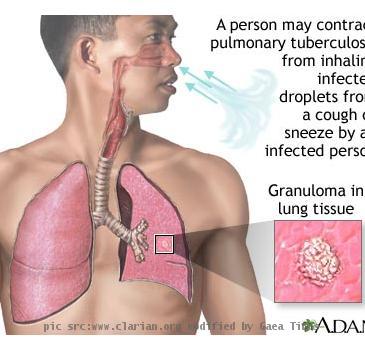‘Fat clue’ to TB discovered
By ANIMonday, March 29, 2010
WASHINGTON - In a major breakthrough that may pave the way for innovative strategies for treating tuberculosis, scientists in the US claim to have found a ‘fat clue’ to the progression of the disease.
The factors instrumental in triggering latent tuberculosis (TB) infection to progress into active disease have long remained elusive to researchers. Now, Professor David Russell and his group at Cornell University in New York, USA, have demonstrated that TB-causing bacteria are able to hijack fat metabolism in the host to drive the progression of the disease.
The research shows that Mycobacterium tuberculosis (Mtb) is able to stimulate macrophages - the immune cells the bacterium infects to accumulate fat droplets, turning them into “foamy” cells. his cellular transformation can trigger a reawakening of the TB infection from its latent state.
Following initial infection by Mtb, the infected immune cells in the body can clump together in the lungs in a cellular mass that is surrounded by a fibrous cuff.
This containing structure, called a tubercle, physically protects the bacteria from being destroyed by the immune system.
This allows them to persist inside the host for years during a latent period in which the host shows no symptoms.
The respiratory infection is reactivated only in a small percentage of individuals in whom it progressively destroys lung tissue. Very little is known about the exact causes of reactivation and the relative roles of the host and the pathogen.
Russell’s group discovered that inside the tubercle, surface molecules of Mtb prompted host macrophage cells to take up vast quantities of cholesterol-type lipids from the surrounding blood vessels.
“We think that the lipids in the newly-formed foamy cell are then expelled into the cellular environment, which contributes to the collapse of the tubercle,” he said.
Once freed from their containing structure, the infectious bacteria are able to leak out into the airways where they can progressively destroy lung tissue.
“If our model is correct, it has huge implications for vaccines and chemotherapy programmes. A more detailed knowledge of the bacterium’s life cycle and its host interactions will allow us to spot new targets for drugs - opening up new possibilities for treatment,” said Russell.
The team presented the research at the Society for General Microbiology’s spring meeting in Edinburgh. (ANI)
